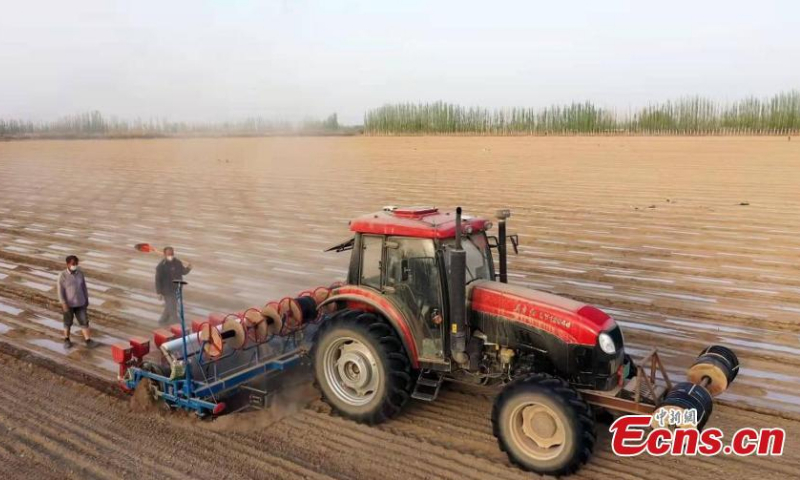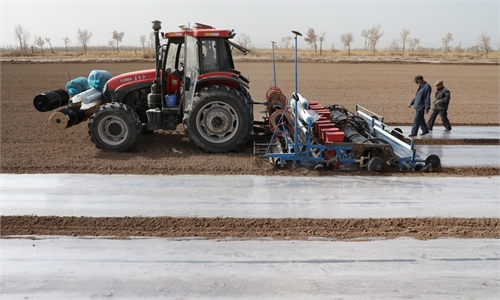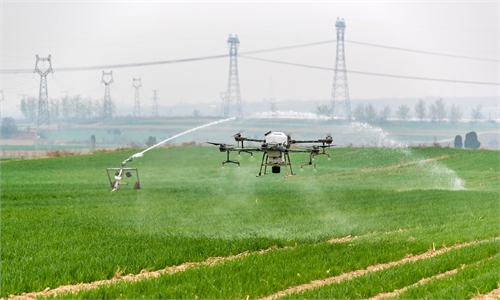China’s spring sowing activities steadily move forward despite epidemic impact: ministry

An autonomous crop-sowing vehicle with Beidou navigation system sows cotton seeds in a cotton field, Awat County, Northwest China's Xinjiang Uyghur Autonomous Region, April 7, 2022. (Photo/China News Service)
As of Tuesday, China had completed 21.2 percent of spring sowing, 1.3 percentage points faster than the same period last year, with the planting area reaching 199 million mu (13.3 million hectares) , the Ministry of Agriculture and Rural Affairs said on Wednesday.
According to the ministry, so far, more than 70 percent of the early rice crop had been planted, with the rice seedling in the northeastern region completing 74.2 percent, both faster than last year.
Moreover, the country has expanded the planting of soybean and oilseed.
Zeng Yande, an official from the ministry, made the remarks as the country vows to ensure national food security amid geopolitical uncertainty and resurgence of COVID-19.
Zeng said that the spring planting has been affected by disruptions in the movement of people, agricultural supplies transportation and marketing of agricultural products due to the epidemic, however the overall impact had been limited.
Spring farming activities are gradually resuming in key areas hit by coronavirus, Zeng said. The rice seedlings in Northeast China's Jilin, the country's important commodity food base of corn, rice and soybeans, are nearing the end, with some areas beginning to sow corn.
The agricultural department of the province said that they have confidence and determination to ensure the completion of this year's grain production and spring sowing tasks as scheduled, as the province has cut off all COVID-19 transmission chains in the local communities.
According to the agricultural authorities in Shanghai, the production resumption rate of the city's spring planting entities has reached 56.7 percent, and rice seedlings will start to be planted in mid-May.
Meanwhile, Northwest China's Xinjiang Uygur Autonomous Region, the country's main cotton-producing area, is entering the peak of cotton spring sowing, and it is expected to sow 37 million mu of cotton this year, the same as the 2021 levels.
Moreover, the growth of winter wheat, the main body of summer crops, is better than expected, with the planting area remaining stable at 336 million mu. With the increase of other summer grain crops like potatoes and beans, the area of this year's summer grain will steadily increase, laying a solid foundation for a good harvest.
Zeng noted that the ministry will coordinate the epidemic prevention and control and spring agricultural production, avoiding a one-size-fits-all anti-epidemic policy and helping small farmers and those affected by the virus to get their land planted, in a bid to speed up the planting and improve the quality of sowing.
Global Times


